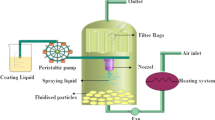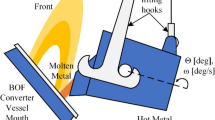Abstract
Approximately 45% of ship delivery delays are due to welding quality. To solve the problematic control of production tempo and process sequence optimization in the welding process, it is urgent to combine the characteristics of the digital twin for dynamic simulation and optimization. Therefore, the capacity evaluation and scheduling optimization for the ship welding production line (WPL) based on the digital twin is proposed. Firstly, to describe the construction method of the digital twin model and digital twin data, a strategy is proposed for the construction of a digital twin ship component WPL model. Based on the fusion mapping of model and data, the construction of the digital twin model for WPL (DTM-WPL) is achieved. Secondly, by using equipment failure rate, processing time and buffer capacity as evaluation indicators, an WPL optimization model based on digital twins is constructed to solve the WPL production sequencing problem. Thirdly, to illustrate the welding quality traceability and prediction process, a DTM-WPL synchronous mapping for quality prediction and adjustment method is proposed. Finally, taking small and medium-sized WPL as the research object, the capacity evaluation and scheduling optimization system of ship components is developed to evaluate the production capacity of ship components. The validation results indicate that the optimized process scheme has increased production efficiency by 7.27%.



















Similar content being viewed by others
Data availability
The data that support the findings of this study are available from the corresponding author upon request.
References
Arrichiello, V., & Gualeni, P. (2020). Systems engineering and digital twin: A vision for the future of cruise ships design, production and operations. International Journal on Interactive Design and Manufacturing (IJIDeM), 14, 115–122. https://doi.org/10.1007/s12008-019-00621-3
Bachelor, G., Brusa, E., Ferretto, D., & Mitschke, A. (2019). Model-based design of complex aeronautical systems through digital twin and thread concepts. IEEE Systems Journal, 14(2), 1568–1579. https://doi.org/10.1109/jsyst.2019.2925627
Back, M. G., Lee, D. K., Shin, J. G., & Woo, J. H. (2016). A study for production simulation model generation system based on data model at a shipyard. International Journal of Naval Architecture and Ocean Engineering, 8(5), 496–510. https://doi.org/10.1016/j.ijnaoe.2016.05.005
Baykasoğlu, A., & Karaslan, F. S. (2017). Solving comprehensive dynamic job shop scheduling problem by using a GRASP-based approach. International Journal of Production Research, 55(11), 3308–3325.
Chen, N., Wang, Z., & Wu, J. (2013). Simulation-based research on adjustment technology of ship block production plan. Paper presented at the 2013 International conference on information technology and applications.
Cheng, D. J., Zhang, J., Hu, Z. T., Xu, S. H., & Fang, X. F. (2020). A digital twin-driven approach for on-line controlling quality of marine diesel engine critical parts. International Journal of Precision Engineering and Manufacturing, 21, 1821–1841. https://doi.org/10.1007/s12541-020-00403-y
Coraddu, A., Oneto, L., Baldi, F., Cipollini, F., Atlar, M., & Savio, S. (2019). Data-driven ship digital twin for estimating the speed loss caused by the marine fouling. Ocean Engineering, 186, 106063. https://doi.org/10.1016/j.oceaneng.2019.05.045
Grieves, M. (2014). Digital twin: Manufacturing excellence through virtual factory replication. White Paper, 1(2014), 1–7.
Hadžić, N. (2019). Analytical solution of the serial bernoulli production line steady-state performance and its application in the shipbuilding process. International Journal of Production Research, 57(4), 1052–1065. https://doi.org/10.1080/00207543.2018.1500042
He, B., & Bai, K. J. (2021). Digital twin-based sustainable intelligent manufacturing: A review. Advances in Manufacturing, 9, 1–21. https://doi.org/10.1007/s40436-020-00302-5
Jiang, X., Song, Q., Fu, W., Xu, Y., & Ding, H. (2020). Design of simulation verification platform for ship sub assembly digital production line control system. Journal of Physics: Conference Series. https://doi.org/10.1088/1742-6596/1650/3/032167
Lee, K. K., & Kim, Y. H. (2011). Development of simulation-based ship production execution system (SPEXS) for a panel block assembly shop. Journal of the Korea Institute of Information and Communication Engineering, 15(11), 2313–2320. https://doi.org/10.6109/jkiice.2011.15.11.2313
Leng, J., Liu, Q., Ye, S., Jing, J., Wang, Y., Zhang, C., Zhang, D., & Chen, X. (2020). Digital twin-driven rapid reconfiguration of the automated manufacturing system via an open architecture model. Robotics and Computer-Integrated Manufacturing, 63, 101895. https://doi.org/10.1016/j.rcim.2019.101895
Leng, J., Zhang, H., Yan, D., Liu, Q., Chen, X., & Zhang, D. (2019). Digital twin-driven manufacturing cyber-physical system for parallel controlling of smart workshop. Journal of Ambient Intelligence and Humanized Computing, 10, 1155–1166. https://doi.org/10.1007/s12652-018-0881-5
Li, L., Liu, D., Liu, J., Zhou, H. G., & Zhou, J. (2020a). Quality prediction and control of assembly and welding process for ship group product based on digital twin. Scanning. https://doi.org/10.1155/2020/3758730
Li, X., He, B., Zhou, Y., & Li, G. (2020b). Multisource model-driven digital twin system of robotic assembly. IEEE Systems Journal, 15(1), 114–123. https://doi.org/10.1109/jsyst.2019.2958874
Liu, C., Jiang, P., & Jiang, W. (2020). Web-based digital twin modeling and remote control of cyber-physical production systems. Robotics and Computer-Integrated Manufacturing, 64, 101956. https://doi.org/10.1016/j.rcim.2020.101956
Liu, J., Zhao, P., Jing, X., Cao, X., Sheng, S., Zhou, H., Liu, X., & Feng, F. (2022). Dynamic design method of digital twin process model driven by knowledge-evolution machining features. International Journal of Production Research, 60(7), 2312–2330. https://doi.org/10.1080/00207543.2021.1887531
Liu, J., Zhou, H., Tian, G., Liu, X., & Jing, X. (2019). Digital twin-based process reuse and evaluation approach for smart process planning. The International Journal of Advanced Manufacturing Technology, 100, 1619–1634. https://doi.org/10.1007/s00170-018-2748-5
Ozkok, M. (2013). Effects of welding operating factor on shipyard panel line’s production quantity. Scientia Iranica, 20(6), 1773–1780.
Pang, J., Zhang, N., Xiao, Q., Qi, F., & Xue, X. (2021). A new intelligent and data-driven product quality control system of industrial valve manufacturing process in CPS. Computer Communications, 175, 25–34. https://doi.org/10.1016/j.comcom.2021.04.022
Qi, Q., Tao, F., Hu, T., Anwer, N., Liu, A., Wei, Y., Wang, L., & Nee, A. (2021). Enabling technologies and tools for digital twin. Journal of Manufacturing Systems, 58, 3–21. https://doi.org/10.1016/j.jmsy.2019.10.001
Qu, S., & Jiang, Z. (2014). A memetic algorithm approach for batch-model assembly line balancing problem of sub-block in shipbuilding. Proceedings of the Institution of Mechanical Engineers Part B: Journal of Engineering Manufacture, 228(10), 1290–1304. https://doi.org/10.1177/0954405413518511
Rezaei-Malek, M., Tavakkoli-Moghaddam, R., Siadat, A., & Dantan, J. Y. (2018). A novel model for the integrated planning of part quality inspection and preventive maintenance in a linear-deteriorating serial multi-stage manufacturing system. The International Journal of Advanced Manufacturing Technology, 96(9–12), 3633–3650. https://doi.org/10.1007/s00170-018-1751-1
Rois, J., Hernandez, J. C., Oliva, M., & Mas, F. (2015). Product avatar as digital counterpart of a physical individual product: Literature review and implications in an aircraft. Transdisciplinary Lifecycle Analysis of Systems. https://doi.org/10.3233/978-1-61499-544-9-657
Shady, S., Kaihara, T., Fujii, N., & Kokuryo, D. (2021). Evolving dispatching rules using genetic programming for multi-objective dynamic job shop scheduling with machine breakdowns. Procedia CIRP, 104, 411–416.
Shin, J. G., Lee, K. K., Woo, J. H., Kim, W. D., Lee, J. H., Kim, S. H., Park, J. Y., & Yim, H. (2004). A modeling and simulation of production process in subassembly lines at a shipyard. Journal of Ship Production, 20(02), 79–83. https://doi.org/10.5957/jsp.2004.20.2.79
Shiue, Y. R. (2009). Data-mining-based dynamic dispatching rule selection mechanism for shop floor control systems using a support vector machine approach. International Journal of Production Research, 47(13), 3669–3690.
Tao, F. (2017). Digital twin shop-floor: A new shop-floor paradigm towards smart manufacturing. IEEE Access: Practical Innovations, Open Solutions, 5, 20418–20427. https://doi.org/10.1109/access.2017.2756069
Urbański, T., Graczyk, T., Taraska, M., & Iwańkowicz, R. (2018). Assessment of technological usefulness of panel production line in shipbuilding process. Polish Maritime Research. https://doi.org/10.2478/pomr-2018-0034
Wang, C., Mao, P., Mao, Y., & Shin, J. G. (2016). Research on scheduling and optimization under uncertain conditions in panel block production line in shipbuilding. International Journal of Naval Architecture and Ocean Engineering, 8(4), 398–408. https://doi.org/10.1016/j.ijnaoe.2016.03.009
Wang, K. J., Chen, J., & Lin, Y. S. (2005). A hybrid knowledge discovery model using decision tree and neural network for selecting dispatching rules of a semiconductor final testing factory. Production Planning & Control, 16(7), 665–680. https://doi.org/10.1080/09537280500213757
Wang, Q., Jiao, W., Wang, P., & Zhang, Y. (2020). Digital twin for human-robot interactive welding and welder behavior analysis. IEEE/CAA Journal of Automatica Sinica, 8(2), 334–343.
Xu, C., & Zhu, G. (2021). Intelligent manufacturing lie group machine learning: Real-time and efficient inspection system based on fog computing. Journal of Intelligent Manufacturing, 32(1), 237–249. https://doi.org/10.1007/s10845-020-01570-5
Zhang, H., Liu, Q., Chen, X., Zhang, D., & Leng, J. (2017). A digital twin-based approach for designing and multi-objective optimization of hollow glass production line. IEEE Access: Practical Innovations, Open Solutions, 5, 26901–26911. https://doi.org/10.1109/access.2017.2766453
Zheng, Y., Yang, S., & Cheng, H. (2019). An application framework of digital twin and its case study. Journal of Ambient Intelligence and Humanized Computing, 10, 1141–1153. https://doi.org/10.1007/s12652-018-0911-3
Zhu, X., & Ji, Y. (2022). A digital twin–driven method for online quality control in process industry. The International Journal of Advanced Manufacturing Technology, https://doi.org/10.1007/s00170-021-08369-5
Funding
This work was supported by the [National Natural Science Foundation of China] under Grant No. [52075229]; [the National Key Research and Development Program of China] under Grant No. [2020YFB1708400]; [Natural Science Foundation of Jiangsu Province] under Grant No. [BK20202007]; [The Natural Science Foundation of the Jiangsu Higher Education Institution of China] under Grant No. [20KJA460009]; Sponsored by Qing Lan Project.
Author information
Authors and Affiliations
Contributions
JL: definitions, methodology, writing. QJ: methodology, software. XZ: software, case study. YC: modeling method, writing. YZ: quality prediction, review and editing. XL: capacity evaluation, scheduling optimization; MT: software, case study.
Corresponding author
Ethics declarations
Conflict of interest
The authors have no conflict of interest to declare that are relevant to the content of this article.
Additional information
Publisher’s Note
Springer nature remains neutral with regard to jurisdictional claims in published maps and institutional affiliations.
Rights and permissions
Springer Nature or its licensor (e.g. a society or other partner) holds exclusive rights to this article under a publishing agreement with the author(s) or other rightsholder(s); author self-archiving of the accepted manuscript version of this article is solely governed by the terms of such publishing agreement and applicable law.
About this article
Cite this article
Liu, J., Ji, Q., Zhang, X. et al. Digital twin model-driven capacity evaluation and scheduling optimization for ship welding production line. J Intell Manuf (2023). https://doi.org/10.1007/s10845-023-02212-2
Received:
Accepted:
Published:
DOI: https://doi.org/10.1007/s10845-023-02212-2




